WILDLIFE TRANSLOCATION
An Interview: The complicated business of flying rhinos
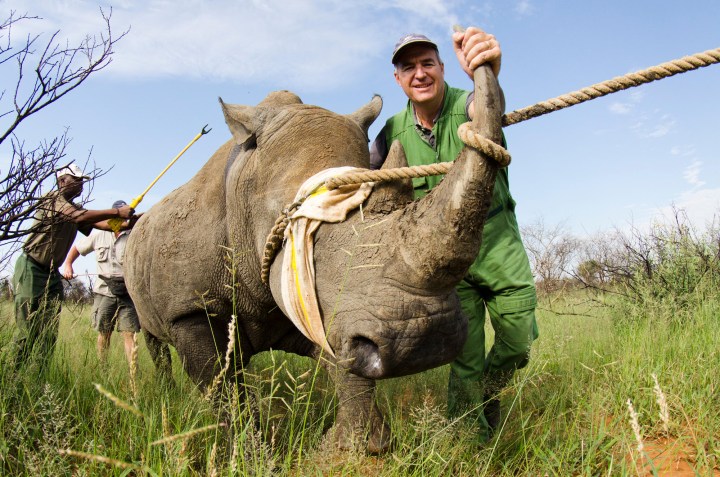
Conservationist Kester Vickery has just translocated 16 rhinos into Garamba National Park, deep in the wildlands of Democratic Republic of the Congo.
As airline passengers go, rhinos are not the easiest customers. They don’t queue, show their passports then quietly wait to board. They snort, stomp and lash out with dangerous weapons.
But Kester Vickery knows the drill. He’s worked in 18 countries transporting thousands of wild animals of around 14 species. Under his care, 16 wild-caught rhinos from Phinda Private Game Reserve in KZN touched down at a remote airstrip in Democratic Republic of the Congo (DRC) last week and entered Garamba National Park into the care of its African Parks team.
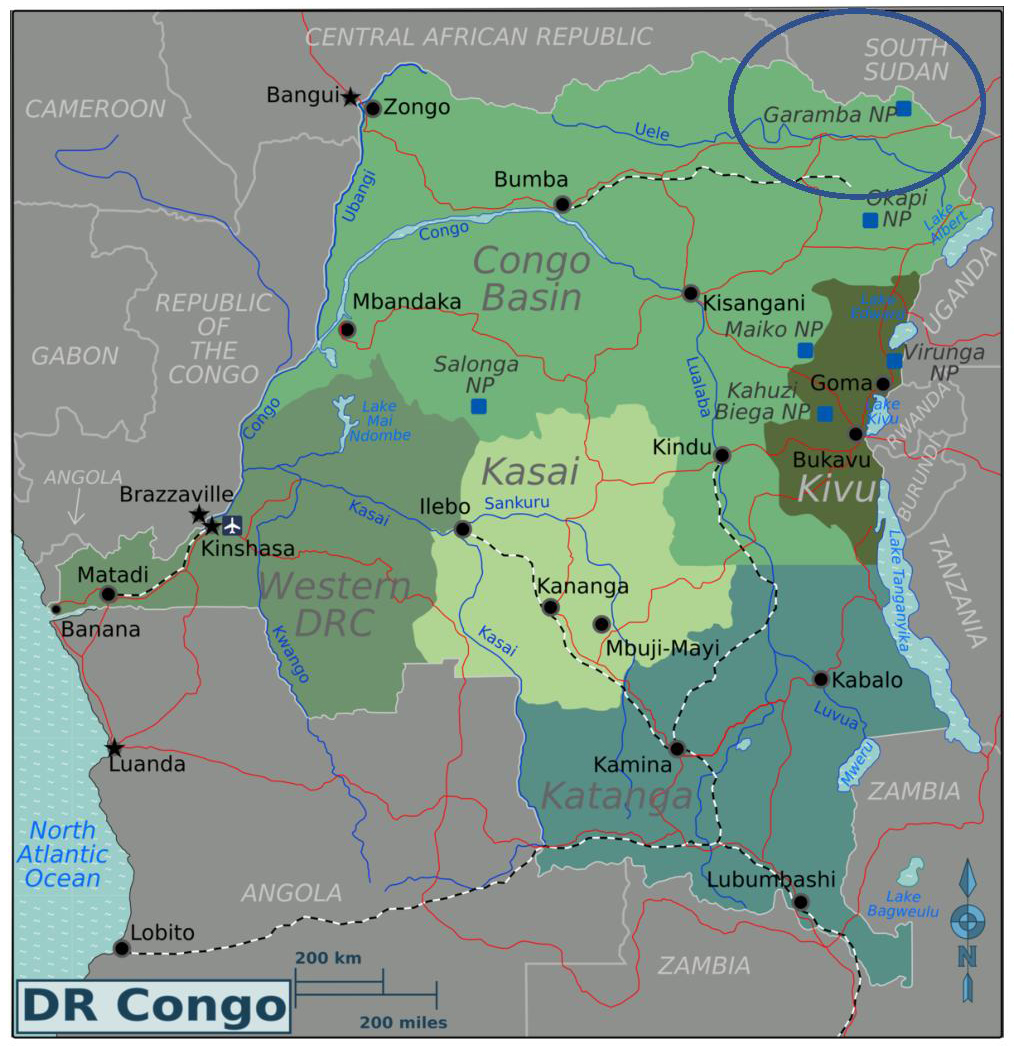
A map location of Garamba. (Image: Supplied)
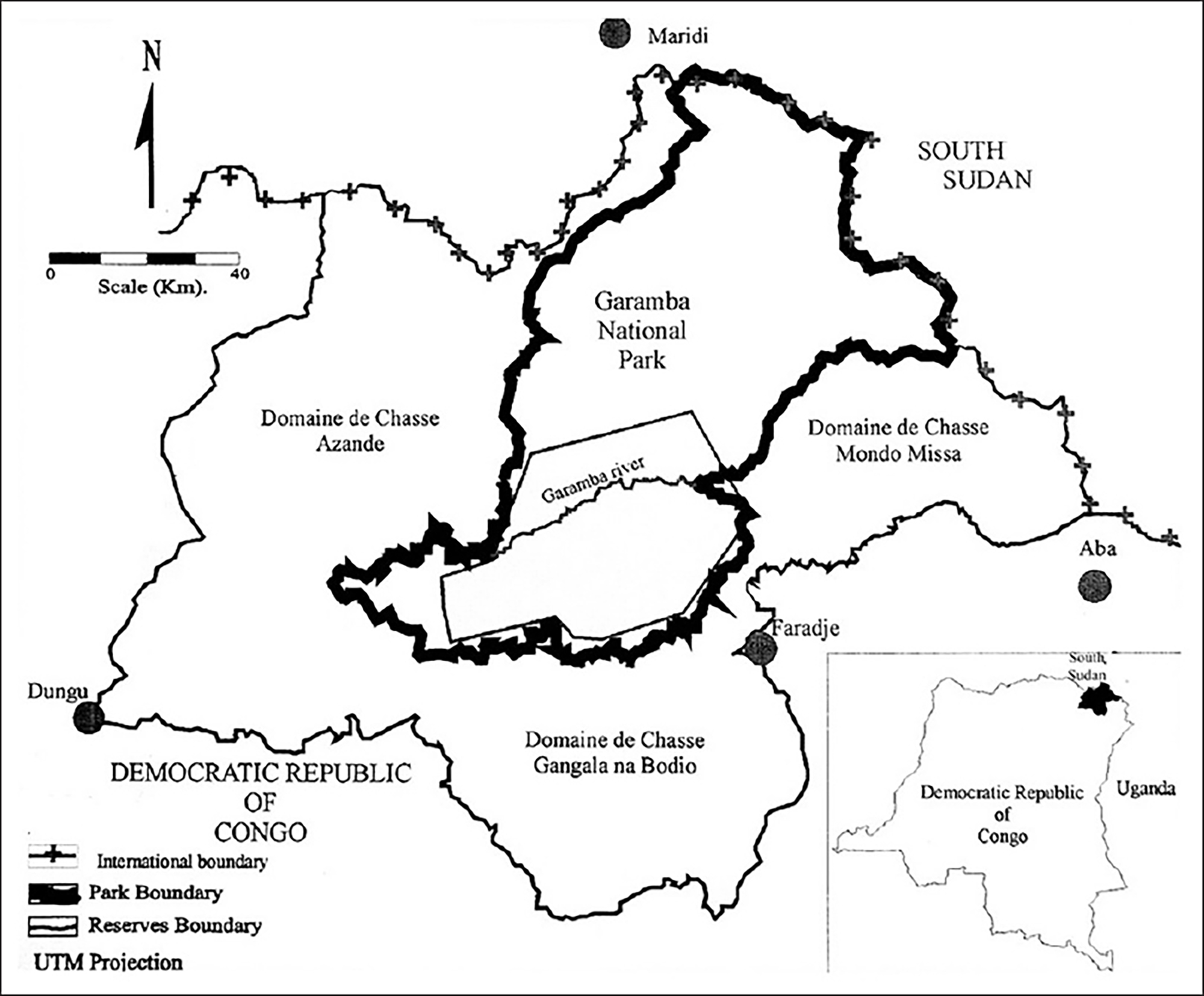
A map of Garamba. (Image: Supplied)
Kester’s passion is rewilding Africa, he says, not transporting animals into confinement, as in zoos. He’s been doing it for most of his working life. Starting as a young game ranger, his company Conservation Solutions is today the biggest wildlife relocator outfit on the continent. In fact, he’s something of a legend.
His work over the past 25 years includes the restocking of entire protected areas, the reintroduction of endangered species such as black rhino, lion, oribi, eland and cheetah into countries where they had previously gone extinct, the movement of more than 3,000 elephants and 4,000 white rhinos, and the largest and most complex elephant translocations ever undertaken.
Daily Maverick asked him to explain the nuts and bolts of capturing and moving a bad-tempered, sharp-horned animal the weight of a motor car.
“At Phinda, we made a selection from a helicopter: not too young or old and in good condition. Then we darted them with M99. It’s extremely toxic to humans – if you prick your finger on the dart tip, within a few minutes you die. It’s about 10,000 times stronger than normal-grade morphine. But all it does to a rhino is put it to sleep.
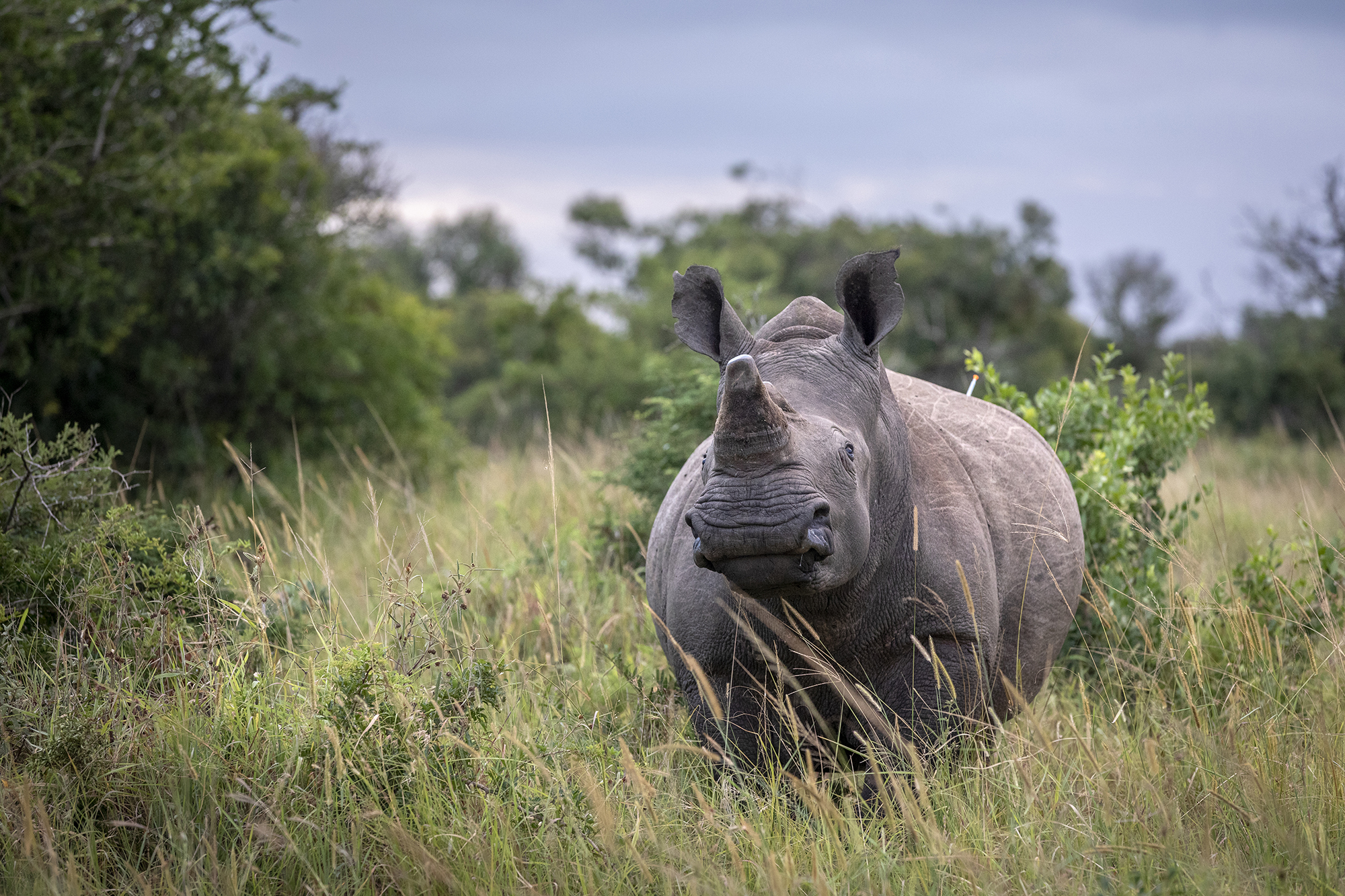
A white rhino in Phinda Private Game Reserve, South Africa. (Photo: Mike Dexter)
“Then you have to get the ground team to the rhino fast. If you observe its blood and is dark, it means it’s not getting enough oxygen. We’ll then use M5050 as a reversal to get its breathing back up.
“We then tie ropes front and back, blindfold it and partially wake it up. In that state, a team of four can walk it to a waiting truck and into a travel crate. If it wakes up and starts throwing the crate around – and it can – we give it a smidgen more M99 and tranquillisers to calm it down and we hope that’s all it will need for the trip.”
It all sounds pretty routine. Have there been mishaps?
“Oh yeah! The really dangerous part is taking off the rope and blindfold. They’re head first in the crate so you have to get there, generally over their back. If they jump you get rammed against the top of the crate.
“If it wakes up too much before crating, it will go for us and send us up trees… very dangerous, especially if it’s a black rhino. They have attitude, they’re fighters and don’t like humans.”
The biggest part of translocation, though, is the preparation – and it can take years. An independent security assessment has to be done at the destination to ensure, as much as possible, the safety of the animals. Then, if it’s a trans-border operation, permits are required from the source and destination countries, plus CITES international permits, DNA samples have to be provided to the Onderstepoort veterinary facility and all the animals have to be microchipped.
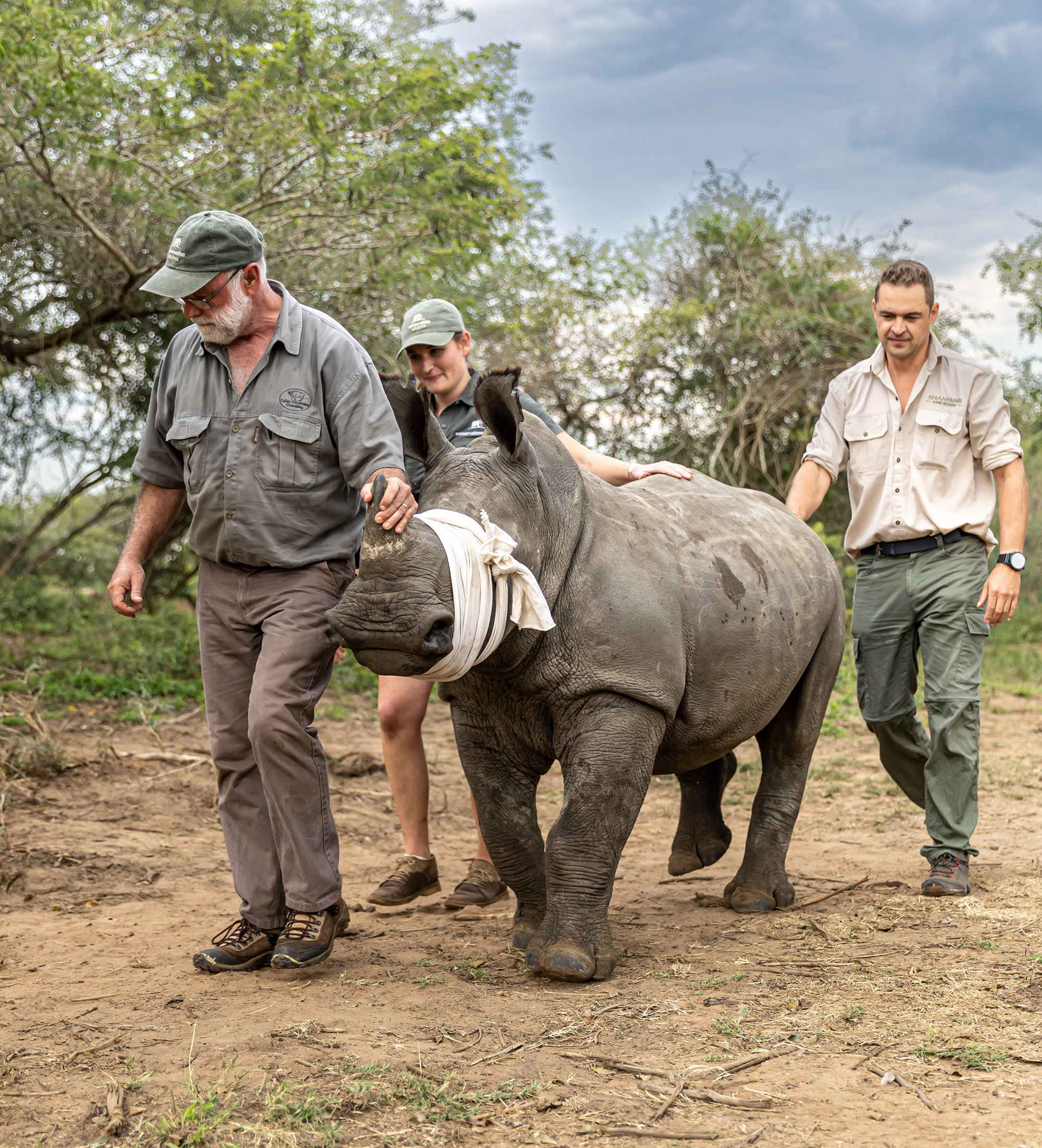
A rhino is accompanied to the crates in Phinda Game Reserve, South Africa. (Photo: Frank Weitzer)
“Then you have to capture the animals and provide DNA samples to the Onderstepoort veterinary facility, which is a waste of time really because they don’t analyse them, they just store them. And you have to microchip the horns, which is also mostly a waste of time because the rhinos rub their horns all the time and kill the chip.”
How can you be sure that, after all that trouble, the rhinos aren’t going to be poached in Garamba?
“You can never 100% know what’s going to happen five or 10 years from now, but African Parks is a really responsible organisation and they wouldn’t introduce them if they weren’t confident about protecting them.
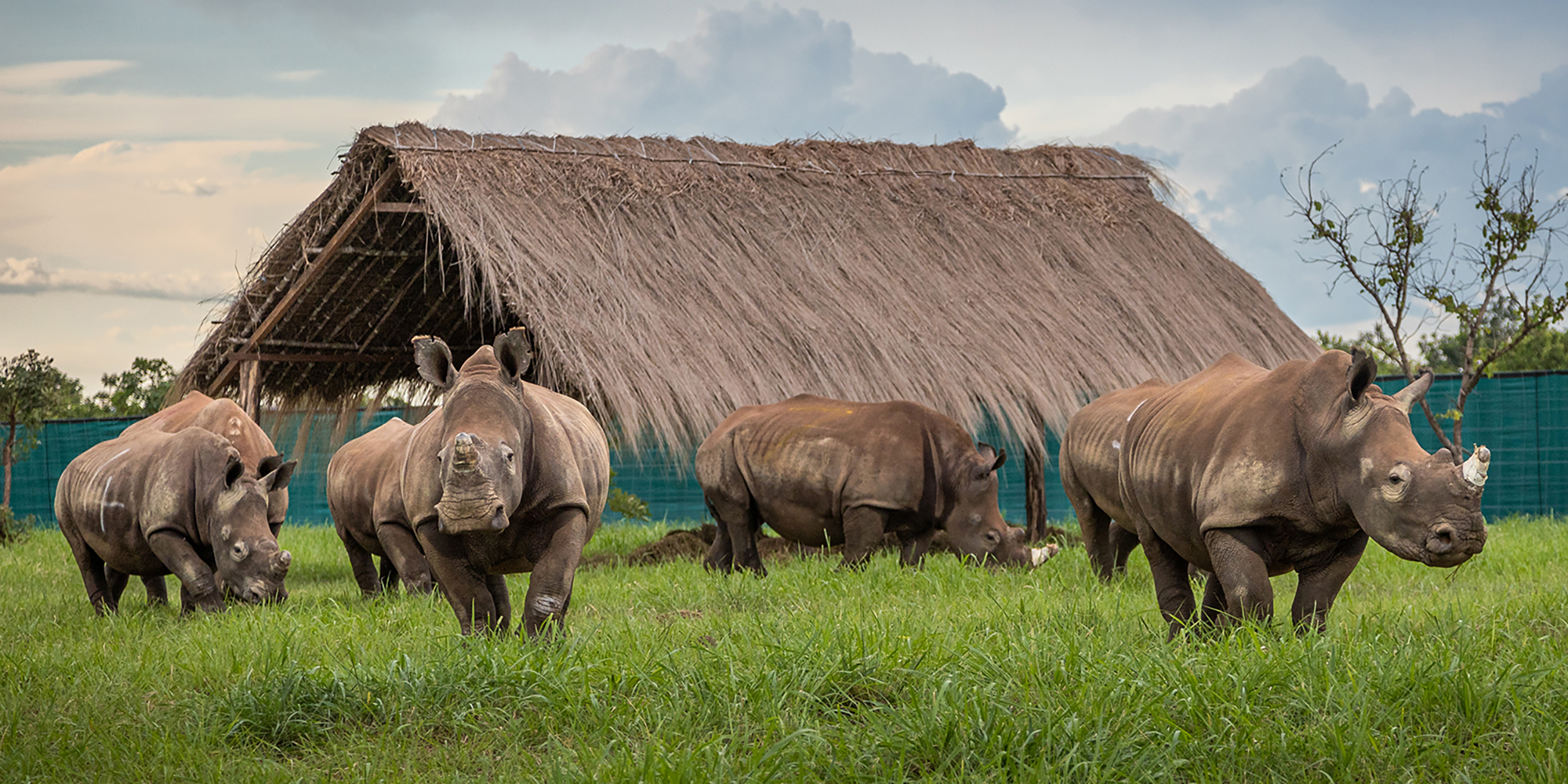
White rhinos at Garamba National Park in Democratic Republic of the Congo. (Photo: Martin van Rooyen)
“Actually, it’s an extraordinary organisation. Speaking under correction, there must be at least 300 scouts at Garamba. There’s been an independent security assessment done… I’ve been there and it looks good.
“Elephants in the area were hugely shot out, reduced from tens of thousands to approximately two thousand. But since African Parks took over there’s been very little poaching in the last 5 years. African Parks can do this. They’re well-resourced and highly ethical and I’m certain those rhinos will be protected.”
Which are the most difficult animals to move?
The hardest animal to move is the one you’re working with that day.
There’s a broad set of rules and experience, but at the end of the day, you’re dealing with wild animals that are unpredictable. Rhinos are actually a bit easier. You’re working with one rhino, one crate, you have more control.
“Elephants are more tricky because you’re working with many at once. There’ll be a container with 10 to 12 elephants. Each animal has different complexities.
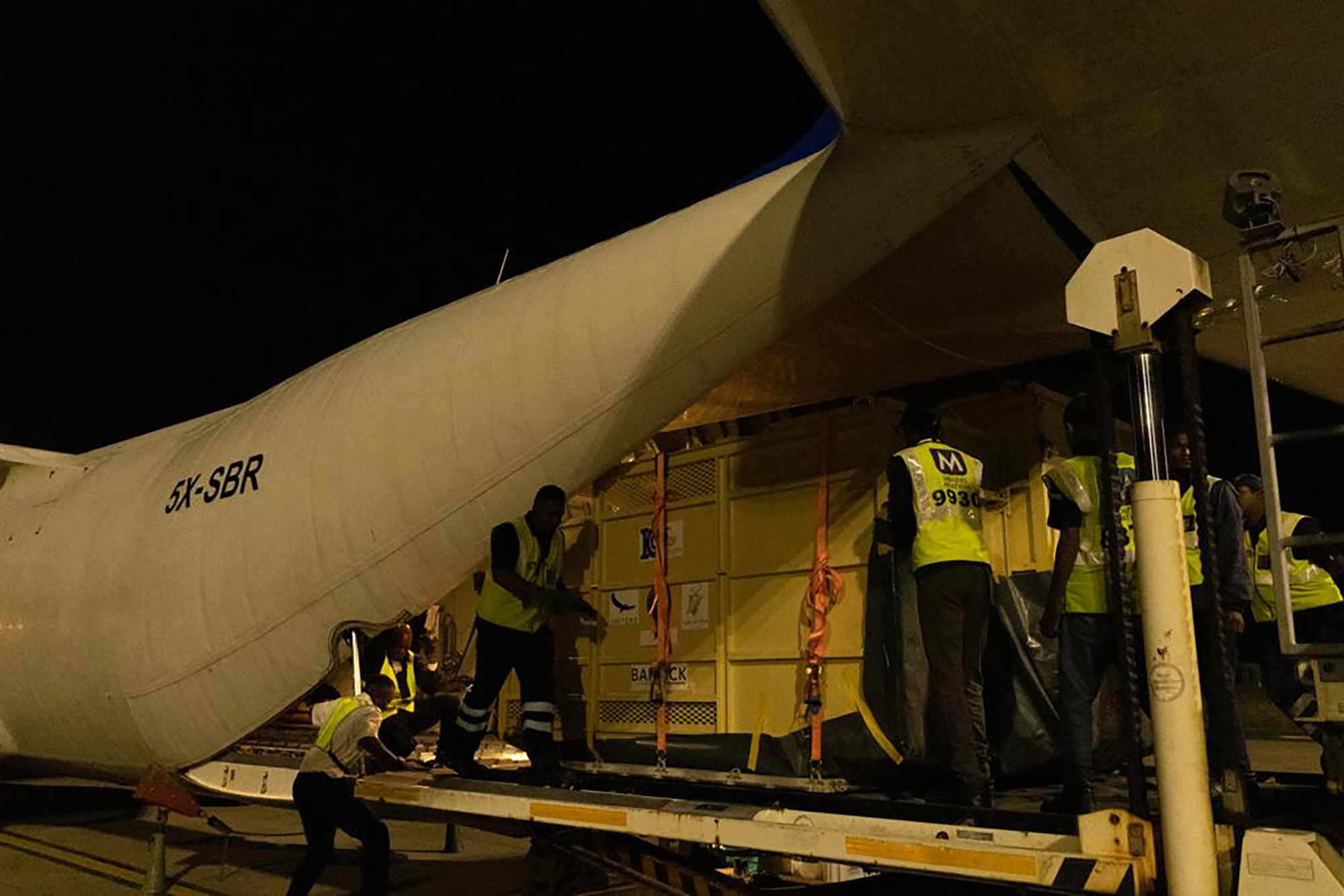
Rhino crates being loaded on to a plane at Durban’s King Shaka International Airport, South Africa. (Photo: Frank Weitzer)
“We’ve moved more than 1,000 elephants for African Parks. In a single day, we moved 38. We’ve developed very sophisticated equipment tailor-made for the job. In one month we moved more than 2,000 animals, of which around 264 were elephants. Lots of logistics, lots of organising.
“We have a fleet of trucks – we prefer using trucks and only use air if we have to, like with the Garamba rhinos. There the terrain is logistically challenging but thankfully there is an airstrip at Kibali mine.
“Our trucks have interchangeable modules for different animals. If you go to Kruger National Park and ask how they move animals, they’ll show you a truck that moves antelope, another truck that can move rhinos, some equipment built in the 1990s. All are out of date. Because we’re a commercial enterprise, we need to be super efficient. We find solutions.
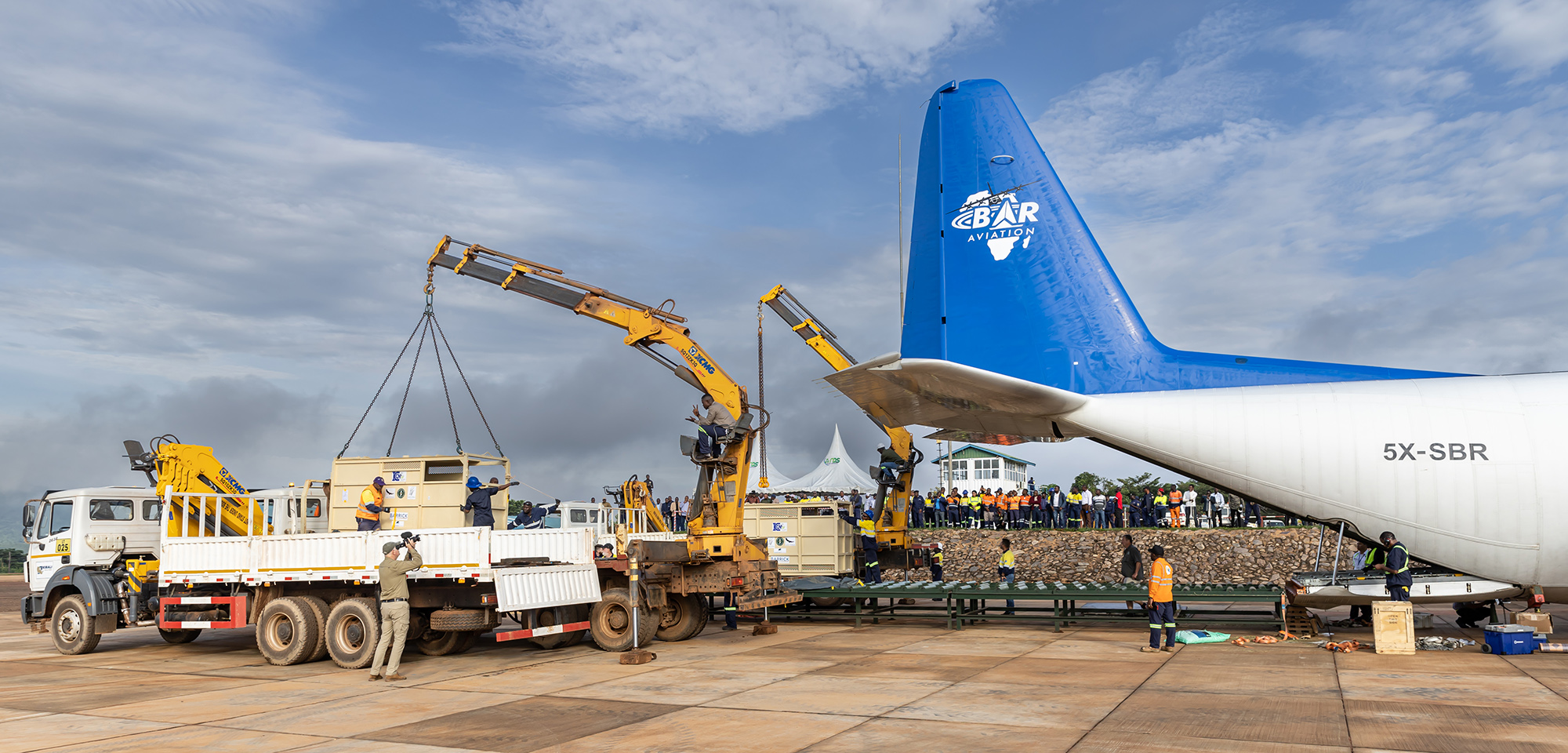
The arrival of the plane with rhinos at Doko Airport, Democratic Republic of the Congo. (Photo: Frank Weitzer)
“Five or 10 years ago the things we do now wouldn’t have been possible. We’re getting better at it. It has opened massive possibilities to be able to rewild new areas further away. The longer we do this, the more possibilities there are to rewild areas where these species no longer exist, or only in small numbers. It’s actually quite an exciting time in our industry.
“But you must understand, it doesn’t always go according to plan. There are risks, but 99% of what we do works out. We have had animals die under anaesthetic – very few – but it’s always heartbreaking.
“We’ve all had close shaves; elephants getting out of crates, lions waking up on the plane and trying to trash their cages, people being chased around by rhinos. Nobody’s written the book about how it should be done.”
Lions trying to get out of crates on a plane?
“Yeah, it was an African Parks project. Terrifying. They were going to Rwanda. They were loaded into a Ukrainian cargo plane at OR Tambo – I think it was an Antonov we hired. A colleague and I were in the hold with the crated lions. They were tranquillised but started waking up and bashing the cages, which were made from angle iron. There was a point when they were bending the doors and were going to pop out.
“I went forward to explain to the pilot that there was impending doom back there and we needed to land somewhere. Like in the movies, the captain was flying in a white vest, all very chilled, smoking heavily. But he didn’t speak English. So I started gesticulating frantically, showing they were going to eat us. He got up and said, ‘No, no you fix’, and literally booted me out of the cockpit and shut the door.”
Good grief, what happened?
We couldn’t tranquilize them given the way the crates are constructed. So we positioned the crate doors against the fuselage after finding some chains to bind the doors shut. Eventually, the lions calmed down. Maybe it was from the volumes of cigarette smoke coming out of the cockpit. We landed okay.
“Nothing like that happened with Garamba’s rhinos, fortunately. The rhinos were airlifted in two moves from King Shaka International Airport to Barrick’s Kibali Mine airstrip in north eastern DRC and then trucked to Garamba National Park. Each move took approximately 30 hours and by the 10th of June, 2023, the 16 white rhinos were being released into a holding paddock in Garamba.”
African Parks’ CEO, Peter Fearnhead was both relieved and delighted.
“Efforts to save the northern white rhino was a case of ‘too little too late’ and should never be allowed to happen again,” he said.
“Now that Garamba is a safe location and has proper protection in place, this reintroduction is the start of a process whereby southern white rhino, as the closest genetic alternative, can fulfil the role of the northern white rhino in the landscape.”
More rhinos will be translocated to Garamba National Park over the next few years to create a viable breeding population. When that happens, African Parks will know who to call. DM

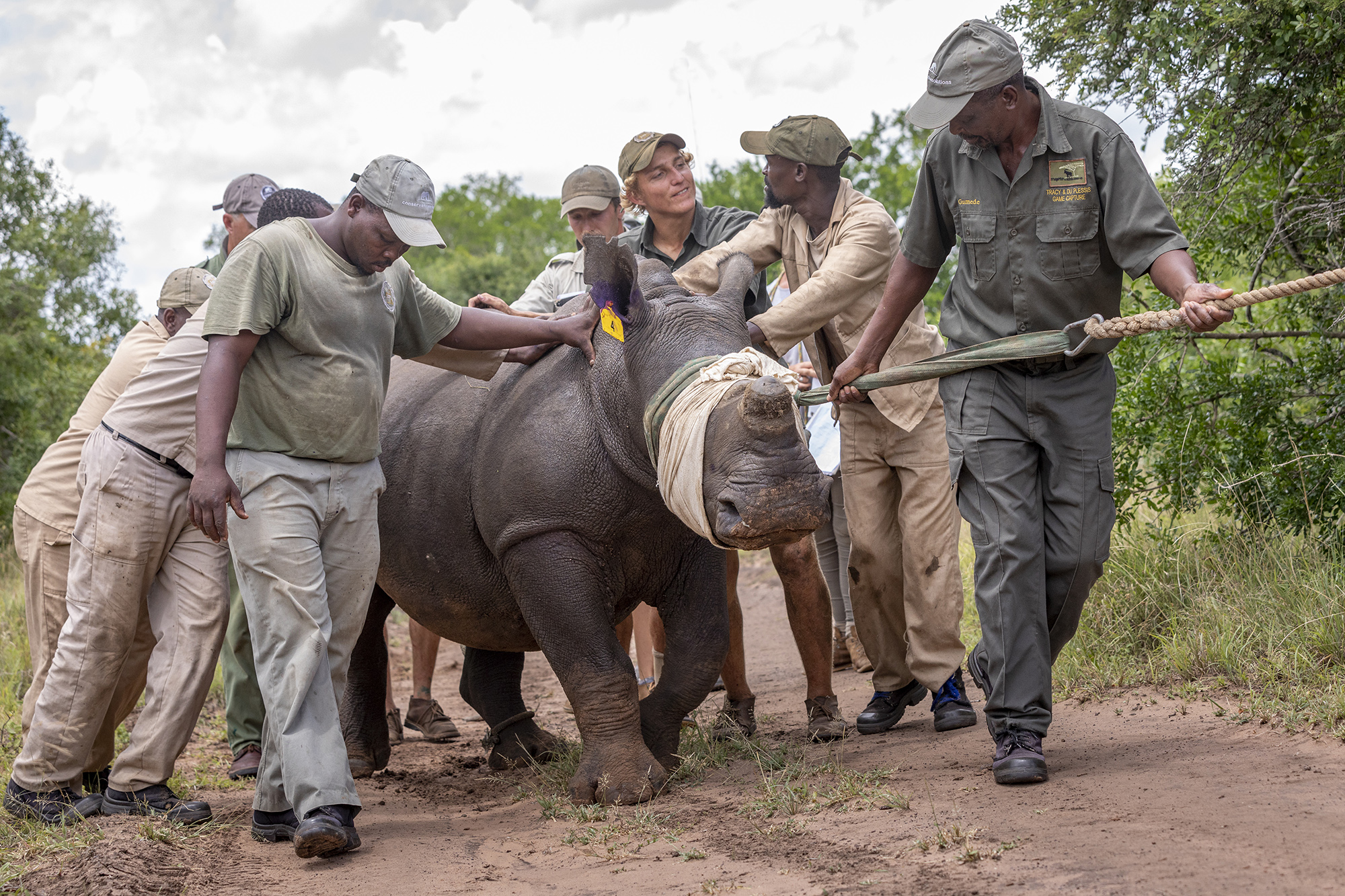



















 Become an Insider
Become an Insider
Comments - Please login in order to comment.